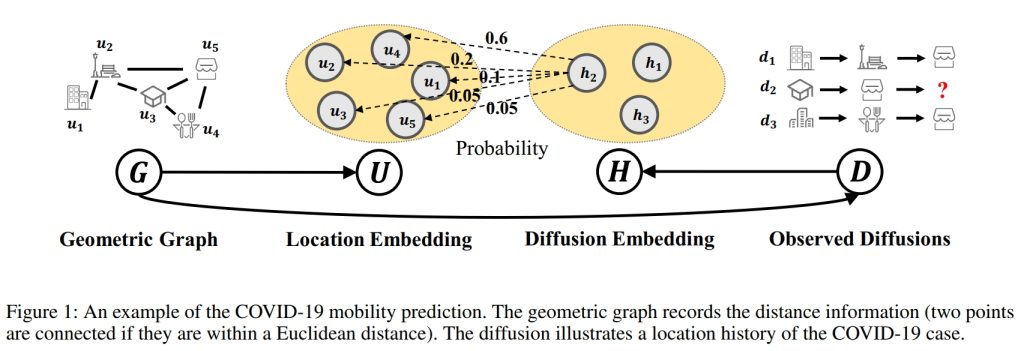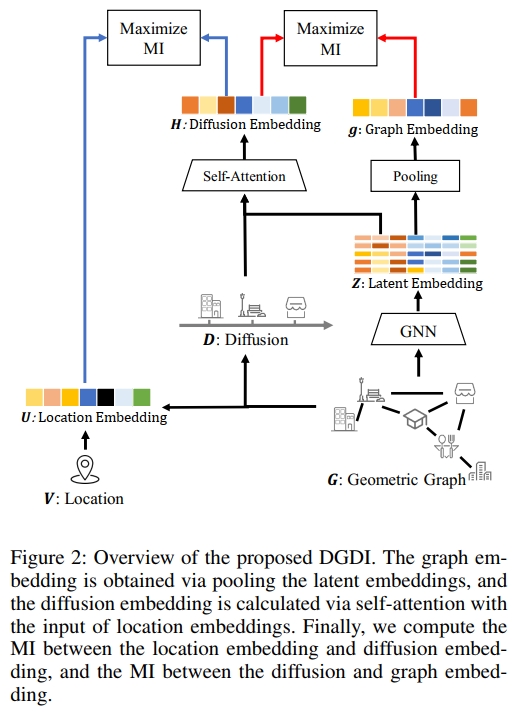Human Mobility Modeling during the COVID-19 Pandemic via Deep Graph Diffusion Infomax
摘要
Non-Pharmaceutical Interventions (NPIs), such as social gathering restrictions, have shown effectiveness to slow the transmission of COVID-19 by reducing the contact of people. To support policy-makers, multiple studies have first modelled human mobility via macro indicators (e.g., average daily travel distance) and then study the effectiveness of NPIs. In this work, we focus on mobility modelling and, from a micro perspective, aim to predict locations that will be visited by COVID-19 cases. Since NPIs generally cause economic and societal loss, such a prediction benefits governments when they design and evaluate them. However, in real-world situations, strict privacy data protection regulations result in severe data sparsity problems (i.e., limited case and location information). To address these challenges and jointly model variables including a geometric graph, a set of diffusions and a set of locations, we propose a model named Deep Graph Diffusion Infomax (DGDI). We show the maximization of DGDI can be bounded by two tractable components: a univariate Mutual Information (MI) between geometric graph and diffusion representation, and a univariate MI between diffusion representation and location representation. To facilitate the research of COVID-19 prediction, we present two benchmarks that contain geometric graphs and location histories of COVID-19 cases. Extensive experiments on the two benchmarks show that DGDI significantly outperforms other competing methods.


出版文章
Human Mobility Modeling during the COVID-19 Pandemic via Deep Graph Diffusion Infomax. Yang Liu, Yu Rong, Zhuoning Guo, Nuo Chen, Tingyang Xu, Fugee Tsung, and Jia Li.
项目周期
2023
研究领域
Data-driven AI
关键词
Deep Graph Diffusion Infomax, Non-Pharmaceutical Interventions


